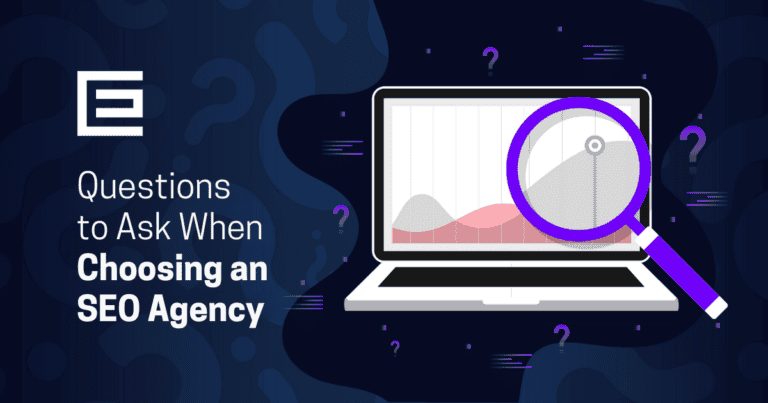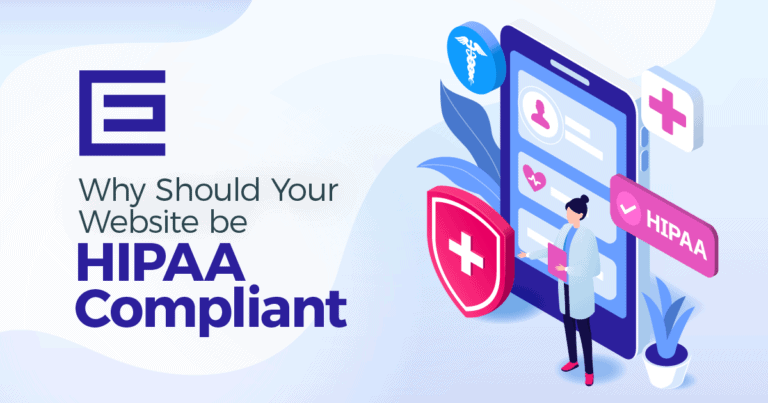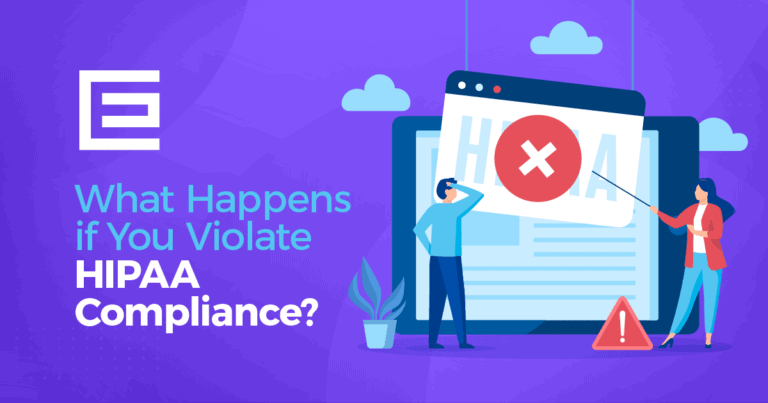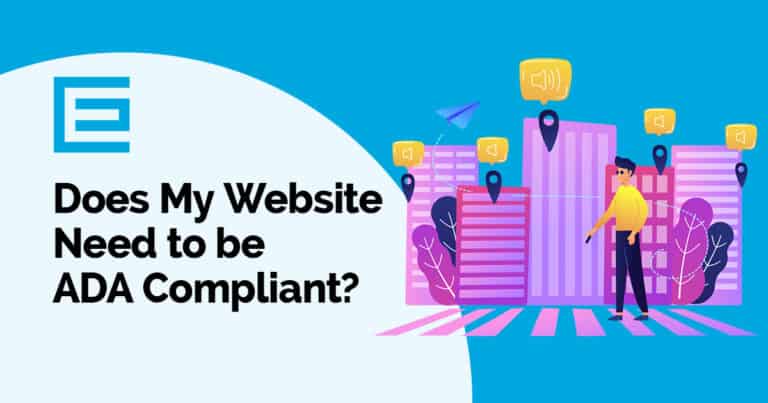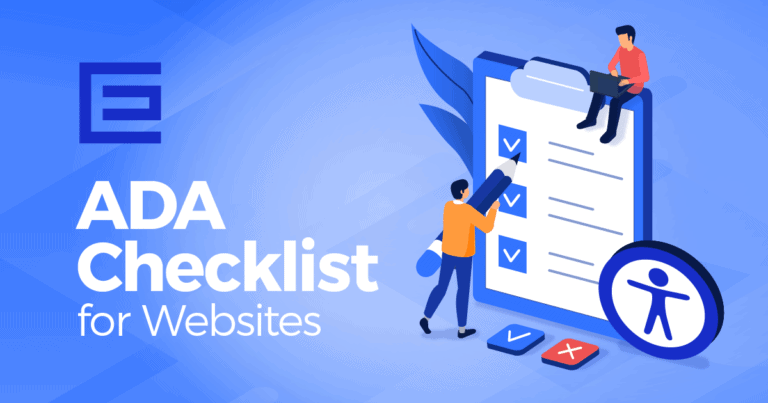HIPAA, which stands for the Health Insurance Portability and Accountability Act, sets the standard for protecting sensitive patient data. When we talk about HIPAA compliant texting, we refer to text messaging services that meet these stringent HIPAA standards, ensuring that any personal health information (PHI) shared over texts is safeguarded against unauthorized access and breaches.
The minimum fine for violating the HIPAA regulations for text messages is $10,000 for willful neglect of regulations – even if the organization corrects the problem.
Can your practice afford the fines for non-compliance?
Traditional methods of communication, like phone calls or faxes, are increasingly being supplemented or replaced by quicker, more efficient text messaging. However, with this shift comes the responsibility to protect patient information. HIPAA-compliant texting solutions provide a secure platform for healthcare providers to communicate with colleagues and patients, share sensitive information, and coordinate care without risking privacy violations.
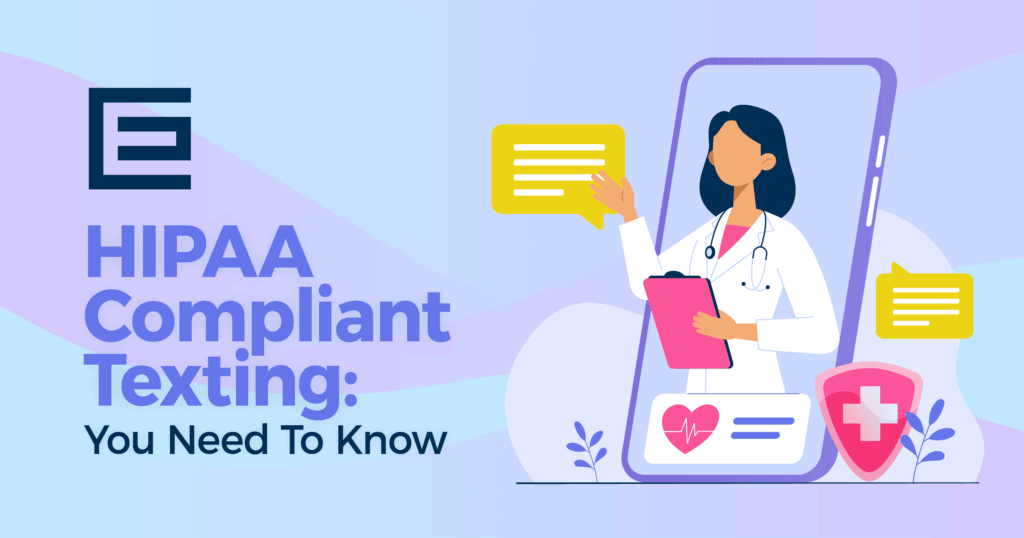
- 1Understanding HIPAA Compliance
- 2The Need for HIPAA Compliant Texting in Healthcare
- 3Features of HIPAA Compliant Texting Solutions
- 4Top HIPAA Compliant Texting Tools
- 5Implementing HIPAA Compliant Texting in Healthcare Settings
- 6Legal and Ethical Considerations
- 7Future of HIPAA Compliant Texting
- 8FAQs
Understanding HIPAA Compliance
The Health Insurance Portability and Accountability Act (HIPAA), enacted in 1996, is a pivotal piece of American legislation that revolutionized the way healthcare information is handled across the industry. At its core, HIPAA aims to ensure that individual’s medical records and other personal health information are properly protected while allowing the flow of health information needed to provide high-quality health care. HIPAA compliance is not just a legal requirement but a commitment to maintaining the confidentiality, integrity, and availability of protected health information (PHI).
Key components of HIPAA compliance include the Privacy Rule, the Security Rule, and the Breach Notification Rule.
- The Privacy Rule sets standards for the protection of individuals’ medical records and other personal health information by regulating how PHI can be used and disclosed.
- The Security Rule, on the other hand, outlines the administrative, physical, and technical safeguards required to ensure the confidentiality, integrity, and security of electronic PHI (ePHI).
- Lastly, the Breach Notification Rule mandates that covered entities and their business associates notify patients, the Department of Health and Human Services, and, in some cases, the media, in the event of a breach of unsecured PHI.
As healthcare providers increasingly rely on digital tools for communication, the risk of potential PHI exposure grows. Texting, while convenient, poses unique challenges in maintaining HIPAA compliance. For instance, standard text messaging services do not typically offer the level of security required to protect ePHI, such as encryption or secure data transmission.
Therefore, healthcare entities must ensure that any digital communication platform, including texting services, adheres to HIPAA’s stringent standards. This means implementing solutions that can securely handle ePHI, ensuring that all communications are encrypted, access is controlled, and audit trails are maintained. Understanding and adhering to HIPAA compliance in the context of texting and digital communication is crucial for safeguarding patient privacy and upholding the trust placed in healthcare providers.
The Need for HIPAA Compliant Texting in Healthcare
The healthcare sector, while advancing rapidly in terms of technology and treatment methods, continues to grapple with significant communication challenges. These challenges range from the need for timely and efficient communication among healthcare providers to the necessity of engaging patients effectively in their care. The complexity of healthcare systems, the sensitivity of medical information, and the urgency often associated with healthcare communication further amplify these challenges.
Texting, with its immediacy and convenience, has emerged as a powerful tool in patient engagement. It allows for quick, direct communication between healthcare providers and patients, facilitating reminders for appointments, follow-ups on treatment plans, and timely advice on health management. This mode of communication can significantly enhance patient satisfaction and adherence to treatment plans, as it caters to the modern patient’s preference for quick and accessible information. Moreover, texting can bridge the gap in patient-provider communication, making healthcare more personable and responsive.
However, the use of standard texting methods in healthcare poses significant risks, primarily due to non-compliance with HIPAA regulations. Non-compliant communication methods can lead to unintended breaches of patient privacy, with sensitive health information potentially being exposed to unauthorized parties. Such breaches not only violate HIPAA regulations, potentially leading to hefty fines and legal repercussions, but they also erode the trust between patients and healthcare providers.
In scenarios where patient data is compromised, the consequences can extend beyond regulatory penalties, including damage to the healthcare provider’s reputation and a loss of patient confidence.
Therefore, the need for HIPAA compliant texting in healthcare is important. It addresses the dual requirement of facilitating efficient communication while ensuring that all exchanges of health information are secure and compliant with regulatory standards.
By adopting HIPAA compliant texting solutions, healthcare providers can leverage the benefits of modern digital communication technologies, while upholding the highest standards of patient privacy and data security. This not only enhances patient engagement and care but also fortifies the healthcare provider’s commitment to maintaining the confidentiality and integrity of sensitive health information.
Features of HIPAA Compliant Texting Solutions
HIPAA compliant texting solutions are designed with a suite of features that ensure the secure handling of protected health information (PHI) in line with HIPAA regulations. These features not only safeguard patient data but also streamline communication processes within healthcare systems.
Encryption and Security Measures
One of the fundamental features of HIPAA compliant texting solutions is robust encryption and security measures. Encryption is crucial as it transforms sensitive data into a code to prevent unauthorized access during transmission and storage. This means that even if a message is intercepted, the information remains unreadable and secure. Additionally, these solutions often include other security measures such as secure login processes, automatic logoff, and data masking to further protect patient information.
Consent and Authorization Management
Consent and authorization management is another critical feature. HIPAA compliant texting requires explicit patient consent for communication of their health information. These solutions facilitate this by providing mechanisms to obtain and record patient consent. Furthermore, they manage authorizations effectively, ensuring that only authorized personnel have access to specific types of PHI. This selective access is vital for maintaining the principle of minimum necessary use, a key aspect of HIPAA.
Audit Trails and Message Accountability
Audit trails are essential for maintaining message accountability and traceability. HIPAA compliant texting solutions log detailed information about each message sent and received, including timestamps, sender and receiver details, and message content. This creates a traceable path that is invaluable for compliance audits and investigations in case of a suspected breach. It ensures that there is a clear record of who accessed what information and when, which is crucial for maintaining transparency and accountability.
Integration with Healthcare Systems
Finally, the ability to integrate seamlessly with existing healthcare systems is a significant feature of HIPAA compliant texting solutions. Integration facilitates the smooth flow of information across different platforms, such as electronic health records (EHRs), patient management systems, and other clinical applications. This integration ensures that patient information remains consistent and up-to-date across all platforms, enhancing the efficiency of healthcare delivery and the accuracy of patient records.
In summary, HIPAA compliant texting solutions are equipped with advanced features like encryption, consent management, audit trails, and system integration. These features collectively ensure that healthcare providers can communicate efficiently while rigorously adhering to HIPAA regulations, thereby protecting patient privacy and enhancing the overall quality of healthcare services.
Top HIPAA Compliant Texting Tools
Several leading solutions stand out in the market, each offering unique features and benefits. Among them, OhMD, TigerConnect, and Rocket.Chat are noteworthy for their compliance, user-friendly interfaces, and varied functionalities.
OhMD
OhMD is widely recognized for its simplicity and effectiveness in facilitating HIPAA compliant communication between healthcare providers and patients. It offers features like two-way texting, broadcast messaging, and integration with electronic health records (EHRs). Its user-friendly interface makes it easy for both medical staff and patients to navigate. In terms of cost, OhMD provides a basic free version with limited features, making it an attractive option for smaller practices, while its premium versions offer more advanced functionalities for larger healthcare organizations.
TigerConnect
TigerConnect is another prominent player in the field, known for its comprehensive suite of features that go beyond texting to include voice and video communication. It stands out for its advanced encryption protocols and message recall capabilities, ensuring a high level of security and control over the information shared. TigerConnect is also praised for its seamless integration with various clinical systems and workflows. While it tends to be on the higher end of the pricing spectrum, its extensive feature set justifies the investment, particularly for larger healthcare institutions that require a more robust communication solution.
Rocket.Chat
Rocket.Chat offers a unique proposition as an open-source platform, allowing for extensive customization and control. It is particularly favored by organizations that have specific needs or require a high degree of customization. Rocket.Chat supports not only text but also voice, video, and file sharing, all within a secure and compliant environment. While it requires more technical expertise to set up and manage, its flexibility and scalability make it a viable option for a wide range of healthcare providers. Pricing for Rocket.Chat varies depending on the level of customization and support required.
Comparative Analysis
When comparing these tools, several factors come into play. In terms of features, TigerConnect offers the most comprehensive range, including voice and video communication, while OhMD focuses more on text-based communication. Rocket.Chat stands out for its customization capabilities. Regarding usability, OhMD is often praised for its ease of use, making it ideal for smaller practices or those with limited technical resources. TigerConnect, while feature-rich, may have a steeper learning curve. Rocket.Chat, given its open-source nature, offers great flexibility but requires more technical know-how. In terms of cost, OhMD’s free basic version is a great starting point for cost-conscious practices, whereas TigerConnect and Rocket.Chat are more suited for organizations looking for a broader range of features and customization options, with the budget to support it.
Each of these HIPAA compliant texting tools has its strengths and ideal use cases. Healthcare providers must consider their specific needs, budget constraints, and technical capabilities when choosing the right tool to ensure secure, efficient, and compliant communication.
Implementing HIPAA Compliant Texting in Healthcare Settings
The implementation of HIPAA compliant texting in healthcare settings is a critical step towards enhancing communication while safeguarding patient information. To ensure successful implementation, adherence to best practices, comprehensive training for healthcare staff, and ongoing monitoring and maintenance of compliance are essential.
Best Practices for Implementation
The first step in implementing HIPAA compliant texting involves selecting the right tool that aligns with the healthcare organization’s needs and complies with HIPAA regulations. Once a tool is chosen, it’s important to integrate it seamlessly with existing healthcare systems, such as Electronic Health Records (EHRs), to ensure consistency and accuracy of patient information. Establishing clear policies and procedures around the use of texting for communication of PHI is crucial. These policies should outline permissible types of messages, methods for obtaining patient consent, and protocols for responding to patient messages.
Another best practice is to ensure that the texting solution is accessible across various devices while maintaining security standards. This includes implementing strong authentication methods to prevent unauthorized access. Additionally, healthcare organizations should establish a process for regularly updating and patching the texting solution to protect against emerging security threats.
Training and Awareness for Healthcare Staff
Effective training and awareness programs for healthcare staff are vital for the successful implementation of HIPAA compliant texting. Staff should be educated on the importance of HIPAA compliance, the specific features of the texting tool, and the organization’s policies regarding its use. Training should cover topics such as secure messaging protocols, understanding what constitutes PHI, and the correct procedures for sharing PHI via text.
Regular training sessions, along with easily accessible resources like manuals or online tutorials, can help ensure that all staff members are proficient in using the texting solution. Additionally, creating a culture of security and privacy within the organization encourages staff to be vigilant and responsible when handling patient information.
Monitoring and Maintaining Compliance
Ongoing monitoring and maintenance are crucial for sustaining HIPAA compliance. This involves regularly reviewing and updating policies and procedures to reflect changes in regulations or organizational practices. Conducting periodic audits of text message logs can help identify any potential compliance issues or breaches.
Healthcare organizations should also have a system in place for addressing and reporting any incidents of non-compliance or breaches. This includes having a response plan that outlines steps to mitigate any potential damage and procedures for notifying affected parties and regulatory bodies, if necessary.
Implementing HIPAA compliant texting in healthcare settings requires careful planning, thorough training, and continuous monitoring. By adhering to these best practices, healthcare organizations can leverage the benefits of modern communication technologies while ensuring the privacy and security of patient information, thereby maintaining trust and compliance in their operations.
Legal and Ethical Considerations
When implementing HIPAA compliant texting in healthcare, it’s crucial to navigate not only the legal landscape but also the ethical terrain. Understanding the legal implications and addressing ethical concerns related to patient privacy and data protection are fundamental to maintaining the trust and integrity of healthcare services.
Understanding the Legal Implications
The legal implications of HIPAA compliant texting are significant. Non-compliance with HIPAA regulations can result in severe penalties, including substantial fines and legal action. These penalties are tiered based on the nature of the violation and the level of negligence involved. In cases of willful neglect, fines can escalate rapidly, and in extreme cases, criminal charges may be filed.
Legal implications also extend to the requirement for breach notifications. In the event of an unauthorized disclosure of PHI, healthcare providers are legally obligated to notify affected patients and, in certain cases, the Department of Health and Human Services. Failure to comply with these notification requirements can further compound legal penalties and damage the reputation of the healthcare provider.
Ethical Concerns in Patient Privacy and Data Protection
Beyond legal requirements, there are profound ethical considerations in handling patient information. Patient privacy is a cornerstone of medical ethics, rooted in the principle of confidentiality. The ethical obligation to protect patient privacy extends to all forms of communication, including texting. This means ensuring that PHI is not only secure but also used and disclosed appropriately and only with patient consent.
Ethical concerns also arise in the context of data protection. Patients entrust their most sensitive health information to healthcare providers with the expectation that it will be protected. Breaches in data security not only violate legal standards but also breach this trust, potentially causing harm to patients. This harm is not just a breach of privacy but can have real-world consequences, such as identity theft or public exposure of private health information.
In addition, there is an ethical responsibility to ensure equity in access to communication. As texting becomes a more prevalent mode of communication in healthcare, providers must consider patients who may not have access to the necessary technology or are not comfortable with digital communication. Ensuring that these patients are not disadvantaged is an important ethical consideration.
In summary, the legal and ethical considerations in HIPAA compliant texting are deeply intertwined. Healthcare providers must navigate these complexities with a thorough understanding of the legal landscape and a strong commitment to the ethical principles of patient privacy and data protection. This dual focus is essential for maintaining the highest standards of care and upholding the trust placed in healthcare providers by their patients.
Future of HIPAA Compliant Texting
As we look towards the future, HIPAA compliant texting is poised to evolve significantly, driven by technological advancements and emerging trends in healthcare communication. This evolution is expected to further enhance the efficiency, accessibility, and security of patient-provider interactions.
Technological Advancements and Trends
One of the key technological advancements shaping the future of HIPAA compliant texting is the integration of Artificial Intelligence (AI) and Machine Learning (ML). These technologies have the potential to automate certain aspects of patient communication, such as appointment reminders and basic patient queries, thereby increasing efficiency and reducing the workload on healthcare staff. Additionally, advancements in encryption technology and cybersecurity are expected to further bolster the security of text-based communications, making them even more robust against potential breaches.
Another significant trend is the increasing use of wearable technology and health monitoring devices. These devices can seamlessly integrate with HIPAA compliant texting platforms, enabling real-time transmission of patient health data directly to healthcare providers. This integration can facilitate more proactive and personalized patient care.
Predictions for the Future of Healthcare Communication
Looking ahead, it’s predicted that HIPAA compliant texting will become an even more integral part of healthcare communication. With the growing emphasis on telehealth and remote patient monitoring, secure texting platforms are expected to play a crucial role in bridging the gap between in-person consultations and virtual care. This shift is likely to enhance patient engagement and satisfaction, as patients increasingly seek convenient and immediate ways to connect with their healthcare providers.
Furthermore, as the population becomes more tech-savvy, there will be a growing expectation for digital communication options in healthcare. HIPAA compliant texting is likely to expand beyond basic messaging to include more interactive features, such as the ability to share multimedia educational materials, conduct virtual consultations, and provide personalized health tips and reminders.
In addition, there is likely to be an increased focus on ensuring that HIPAA compliant texting solutions are inclusive and accessible to all patients, regardless of their technological literacy or access to digital devices. This may involve developing more user-friendly interfaces and providing alternative communication options for those who cannot or prefer not to use digital platforms.
In conclusion, the future of HIPAA compliant texting in healthcare is bright, with technological advancements poised to enhance the way healthcare providers communicate with their patients. As these technologies continue to evolve, they will undoubtedly bring about more efficient, secure, and patient-centered communication methods, fundamentally transforming the landscape of healthcare communication.
FAQs
What are the penalties for HIPAA violations?
HIPAA violations can result in significant penalties, which vary based on the severity and nature of the violation. These penalties are categorized into different tiers, reflecting the level of negligence. For unintentional violations, fines can range from $100 to $50,000 per violation, with a maximum annual penalty of $25,000 for repeat violations. For violations due to reasonable cause and not willful neglect, fines range from $1,000 to $50,000 per violation. In cases of willful neglect that are corrected within a required time period, fines range from $10,000 to $50,000 per violation. However, if willful neglect is not corrected, the penalty can soar to $50,000 per violation, with a maximum annual penalty of $1.5 million. In extreme cases, HIPAA violations can also lead to criminal charges, resulting in jail time.
How can healthcare providers ensure HIPAA compliance when texting patients?
To ensure HIPAA compliance when texting patients, healthcare providers should use a texting solution that is specifically designed to be HIPAA compliant. This includes features like end-to-end encryption, secure user authentication, and audit controls. Providers should obtain explicit consent from patients before communicating via text and ensure that only necessary PHI is shared. It’s also important to regularly train staff on HIPAA rules and the proper use of texting for patient communication. Regular audits and updates to the texting platform and compliance policies are also crucial to address any emerging threats or changes in regulations.
What are common HIPAA mistakes to avoid in patient communication?
Common HIPAA mistakes in patient communication include using non-compliant messaging apps or platforms that lack necessary security measures like encryption. Sending PHI to the wrong recipient, either due to human error or lack of proper verification processes, is another frequent mistake. Discussing sensitive information in public or semi-public areas where it can be overheard or seen by unauthorized individuals is also a risk. Additionally, failing to obtain proper consent from patients before communicating PHI or neglecting to provide patients with access to their own health information can lead to compliance issues. To avoid these mistakes, healthcare providers should adhere strictly to HIPAA guidelines, use compliant communication tools, and foster a culture of privacy and security awareness within their organization.
Need PPC or SEO services for your business website?
Tags: HIPPA Compliance

